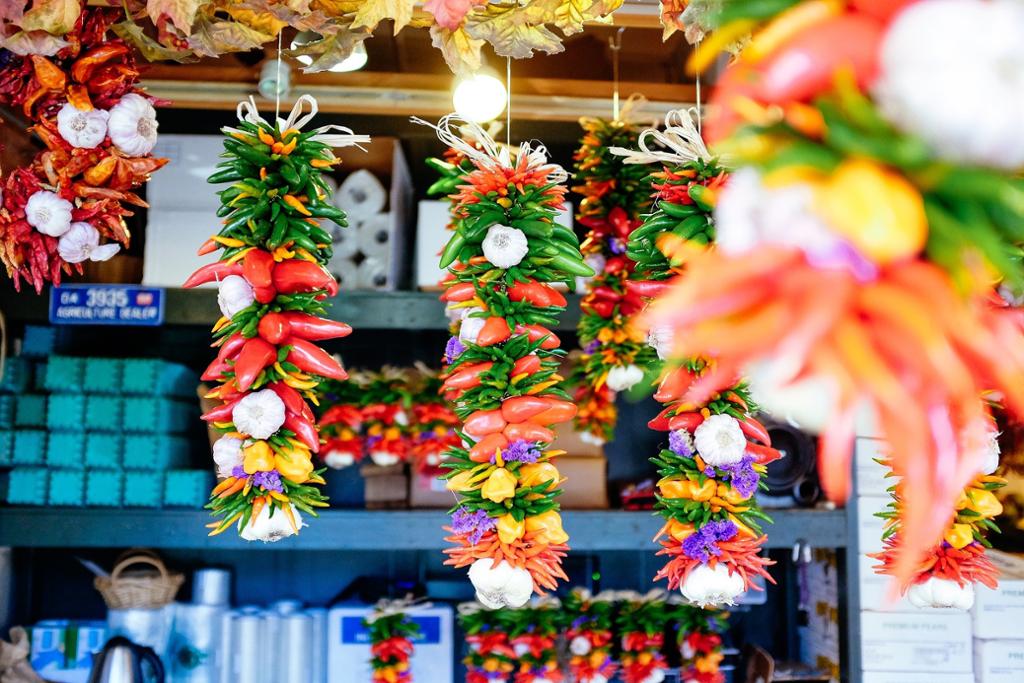Listening activity: Soul Food

Watch the following video (1:28 min.) and find out: what exactly is a New Orleans style King Cake? Afterwards, try and summarize an answer to that question to a classmate. You might need to watch the video more than just once.
Listen to the following talk between two teachers planning a project for their students called “Down South - Soul Food”. You can choose between listening to it with or without the below transcript.
Two different approaches:
- Check your understanding: Listen to the dialogue and answer the questions provided.
- Practice for the first part of the oral exam: Listen to the dialogue several times and take notes in order to be able to give a detailed summary of what the text is about.

Down South – Soul Food
Tekstversjon
Down South – Soul FoodIntroduction: Hi, my name is Nina and I am an English-teacher at a combined senior highschool in the south of Norway. This year I teach English in vocational courses for pupilsstudying the Programme for Restaurant and Food Processing. This is my first year at thisprogramme, but I love everything about food, different tastes and cultures. This is why mycolleague Peter who is your main teacher in the kitchen, and I have planned a cross curriculartopic in English and Food Processing.
The topic is “Down South- Soul Food”. The setting is in New Orleans, one of the major citiesin the state of Louisiana in the south of the USA. The city is famous for tourism, its playfulatmosphere, a rich culture and unique food traditions. Peter and I are so excited to work withthese themes together with you. Please listen to a conversation we had when we planned thiseducational topic for you:
English-teacher Nina: Hi Peter, it is so good to see you!’ You sure got a decent tan thissummer.
Peter: Hello Nina, I had a great summer holiday too, and finally we meet. The start of a newschool year is always so busy.
Nina: I agree, but still I have looked forward to meeting you. Are you ready for Soul Foodand Carnival?
Peter: Food is always on my mind, I don’t know about carnival though…
Nina: Well, you never know, Peter…our pupils have already started to read about Mardi Gras,which is the carnival celebration in the south states of the USA. The most famous one is inNew Orleans in Louisiana.
Peter: The names sound French to me. You know French is a very important language in theworld of food…
Nina: I think I have noticed that. He, he. The good thing about our project is that the food inNew Orleans is a mix of several cultures and traditions. You are the expert here, Peter. Pleasetell us about the Cajun and Creole food.
Peter: Okay, I travelled to Louisiana as a tourist and as a teacher some years ago. You learn somuch when traveling. There are differences between Cajun and Creole food as to theseasoning or spices that we use. I burnt my tongue the first time I tasted Cajun cooking, as itis often heavily spiced with cayenne pepper…
Nina: He, he. I know that Cajun food is inspired by French cuisine- and garlic, paprika,thyme, parsley and a little dash of cayenne pepper are common ingredients in Cajun kitchens.Actually, I haven’t tasted food like this yet, so I look forward to tasting the dishes our pupilswill be making during the next two weeks.
Peter: Yes, I’m prepping them now by teaching them about the different spices and mixturesof vegetables- or veggies- like onion, celery and bell pepper.
Nina: Bell pepper?
Peter: We call them paprika. They come in green, red, yellow- yeah?
Nina: Oh, right – you taught me a new word, thanks! When I think of it, they do remind me ofbells. Anyway, I also enjoy having fun with costumes. I have always loved to act and use hats,dresses, shoes- you name it. I wonder if I should bring my carnival mask for class on Friday. Ibought it in Venice, Italy. Then I can make a surprise entrance…
Peter: Eeeh, Nina. Mardi Gras or "Fat Tuesday," is months from now, the celebration with thecarnival is normally in February. It’s still August at the minute...
Nina: Sorry, I get so easily carried away, but I am really enthusiastic about this project, thehot spices and the food mixing with the colorful costumes and the rhythms of the carnival.
Bell pepper, funny word…
Peter: So Nina, the school bell is just about to ring and we need to get to class and meet ourpupils. I guess they are super excited to hear what we have planned for our project.
Nina: Just wait till they see our grand entrance…
Peter: Nina, seriously. Take a deep breath, and let us walk slowly and decently to ourclassroom!
Check your understanding:
- Explain why the new topic is called “Down South - Soul Food”.
- What is Mardi Gras?
- What vegetable reminds Nina of bells?
- What prop does Nina want to use to make her ‘grand entrance’?